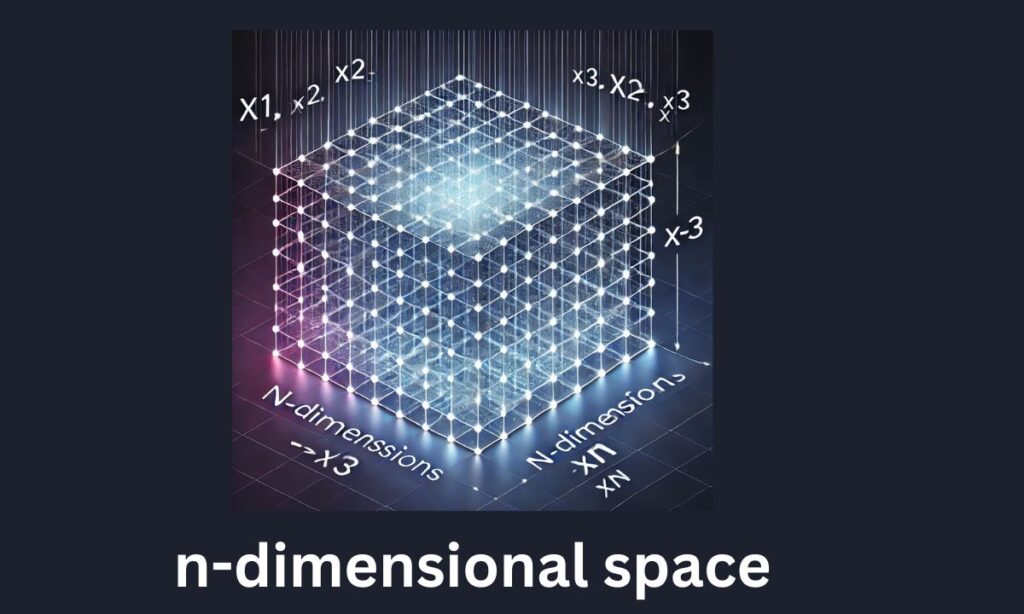When you hear the term “n-dimensional,” it might seem like a concept pulled from the pages of science fiction. However, n-dimensional spaces are foundational in mathematics, physics, computer science, and beyond. Let’s dive into this fascinating topic to understand its meaning, examples, and practical applications.
What Does “N-Dimensional” Mean?
In simple terms, an n-dimensional space refers to a mathematical construct that extends beyond the usual three dimensions we experience in our physical world. Here, “n” represents the number of dimensions in the space. For instance:
- A 1-dimensional space is a line.
- A 2-dimensional space is a plane.
- A 3-dimensional space encompasses height, width, and depth—the space we live in.
- For higher values of n, such as 4, 5, or 10, the concept becomes abstract but can be visualized mathematically.
These spaces are often called real coordinate spaces, denoted as Rⁿ, where “n” specifies the number of coordinates needed to locate a point.

Examples of N-Dimensional Space
1. Vectors in N-Dimensional Space
An n-dimensional vector is a list of n numbers, such as: v=(v1,v2,…,vn) Each component corresponds to a coordinate in the n-dimensional space. For instance:
Examples:
A 3D vector: (3,4,5)
A 5D vector: (1,2,3,4,5)
- A 3-dimensional vector might look like , representing a point or direction in 3D space.
- A 5-dimensional vector could be , commonly seen in machine learning where each dimension corresponds to a data attribute, like age or income.
These vectors are the foundation for representing data in high-dimensional spaces.
8 Advantages of Homogeneous Coordinates in Computer Graphics
2. N-Dimensional Euclidean Space
In an n-dimensional Euclidean space, the distance between two points is calculated using the generalized version of the Pythagorean theorem: This formula measures distances in spaces with any number of dimensions. It’s widely applied in clustering algorithms to group similar data points and in evaluating similarity measures.
3. N-Dimensional Sphere
An n-dimensional sphere, or hypersphere, is the generalization of a circle (2D) and a sphere (3D) to higher dimensions. Its formula for volume is: where is the gamma function.
For instance:
- A 2D circle’s area is a hypersphere in 2 dimensions.
- A 3D sphere’s volume is a hypersphere in 3 dimensions.
Hyperspheres are crucial in probability theory, geometry, and simulations like Monte Carlo methods.
Applications of N-Dimensional Spaces
1. Machine Learning and Support Vector Machines (SVM)
In machine learning, n-dimensional spaces represent feature spaces. For example, if you’re classifying emails as spam or not spam, each feature (like the frequency of a certain word) represents a dimension. The dataset forms a cloud of points in an n-dimensional space.
Support Vector Machines (SVMs) use this space to find the best hyperplane that separates different classes of data. Even if the data isn’t linearly separable in lower dimensions, it might become separable in higher dimensions using kernel functions.
2. Physics and Cosmology
N-dimensional spaces are critical in theoretical physics, especially in string theory and general relativity. For instance:
- String theory suggests that the universe might have up to 11 dimensions.
- In general relativity, spacetime is treated as a 4-dimensional construct, with three spatial dimensions and one temporal dimension.
Higher-dimensional spaces allow physicists to model phenomena that cannot be explained using classical 3D perspectives.
3. Data Science and Big Data
High-dimensional data is ubiquitous in data science. For example:
- In customer segmentation, each attribute (age, income, purchase history) is a dimension in the data space.
- Algorithms like Principal Component Analysis (PCA) reduce the dimensions of such spaces to make data more interpretable.
4. Computer Graphics and Visualization
In computer graphics, transformations like rotations and scaling are described using matrices that act in n-dimensional spaces. Techniques like ray tracing often compute interactions in higher-dimensional parameter spaces to generate realistic images.
5. Optimization Problems
Optimization often involves navigating n-dimensional spaces to find the best solution. Applications range from training neural networks (adjusting millions of parameters) to supply chain logistics (minimizing costs across multiple factors).
Why N-Dimensional Spaces Matter
The study of n-dimensional spaces isn’t just an abstract mathematical exercise. It underpins modern advancements in artificial intelligence, physics, and data science. Whether analyzing high-dimensional data sets or exploring theoretical physics, understanding n-dimensional spaces unlocks new perspectives and solutions.
FAQs
What is an n space?
N space, or n-dimensional space, is a mathematical construct where each point is described by n coordinates. For example, 3D space is an example of R³, while 4D space is R⁴.
What is the n-dimensional number?
An n-dimensional number typically refers to the coordinates of a vector or point in an n-dimensional space.
What does the n mean in dimensions?
The “n” in dimensions indicates the number of independent directions or coordinates required to describe a point in the space.
What is n-dimensional space in SVM?
In Support Vector Machines, n-dimensional space represents the features of the data set. Each data point is placed in this space, and the SVM algorithm finds the hyperplane that best separates different classes.